Angelica / Spring / Summer / Autumn / Edible
A common, annual and edible member of the Carrot or Umbellifer family. It’s not the easiest plant to ID as its leaves look a little like Hemlock Water Dropwort (Oenanthe crocata) so care must be taken.
Common Names
Angelica, Wild Angelica
Botanical Name
Angelica sylvestris
Scientific Classification
Kingdom – Plantae
Order – Apiales
Family – Apiaceae
Physical Characteristics for Angelica
Leaves
The leaves do look similar to deadly poisonous Hemlock Water Dropwort (oenanthe crocata). They grow alternately from the main stem and are attached by a long petiole. Where the leaves and the stem meet there is an inflated sheath. The leaves themselves are deep green, smooth, glossy and 2-3 times pinnate. The leaflets are finely serrated, the terminal leaflet has three lobes. Up to 30cm long.
Flowers
The flowers grow in umbels, there is a main umbel and then secondary umbellets that are separated from each other. The flowers are white to pink, tiny with long stamens, the very centre of the flower called the stylepodium is bright yellow.
Stems
The stems ae hollow, ridged with a purple tinge and can be up to 2 metres long.
Seeds
The fruits are oblong and will ripen to a dusty brown colour. They have 3 parallel lines or ridges running down the centre. They are around 3-4mm long and have 4 broad lateral wings (two on each side) with thin white edges.
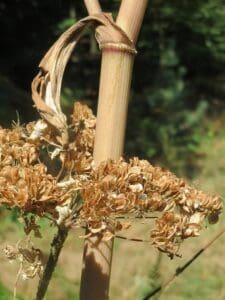
Habitat
It’s quite a common plant and it prefers damp places such as riverbanks, woodland edges and marshes.
Known Hazards
Like other members of the Carrot family it contains phototoxic compounds called furanocoumarins that may cause sensitivity to the sun. Contact with the juice can cause a rash or skin irritation in some.
Could be Confused with
It can look similar to Hemlock Water Dropwort, both plants also like similar habitats so care must be taken. HWD is considered to be one of the world’s most toxic plants! Angelica leaves tend to be wider and more irregularly lobed. The sheaths at the base of each leaf is also a key ID feature.
Of less concern is Garden Angelica (Angelica archangelica) this is a non-native species but has naturalised in some areas of the UK, it’s also edible and can be used in a similar way as Wild Angelica.
Edible Uses
All parts of the plant are edible.
The leaves and shoots have been traditionally used to make candied cake decorations, it became more common to use Garden Angelica (Angelica archangelica) as it’s not as tough.
To make them the leaves, stems and shoots are boiled until soft and then they are crystallised by soaking in sugar syrup and baking in the oven.
The flavour works in sweet and savoury food, young leaves are nice as a leafy green and the stems can be stewed like rhubarb.
The aromatic roots have a really interesting flavour but can be a little tough.
The seeds can be dried and ground and used as a spice.
Notes on Herbal Uses
The plant has antispasmodic and anti-inflammatory actions which are useful for treating minor stomach upsets and indigestion.
It is also used to treat a wide variety of other ailments such as heartburn, intestinal gas, and loss of appetite, arthritis, circulation problems, respiratory catarrh, nervousness, plague and insomnia.
Some women use Angelica to start their menstrual periods. Sometimes this was done to cause an abortion.
It is also thought to improve sex drive and can be used to treat premature ejaculation.
Extra notes from the Foragers
The genus name Angelica means angelic or like an angel. The name sylvestris means ‘of the woods’,
References:
https://en.wikipedia.org/wiki/Angelica_sylvestris
https://www.wildlifetrusts.org/wildlife-explorer/wildflowers/wild-angelica
https://www.rxlist.com/angelica/supplements.htm



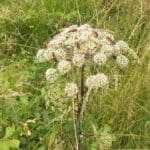
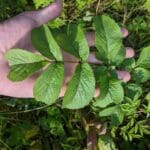
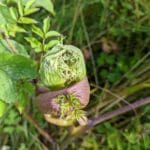
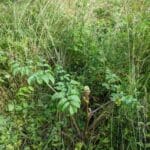
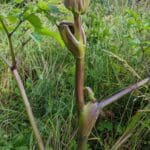
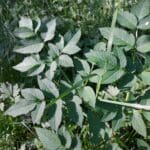
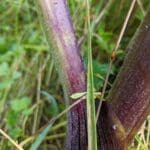



Leave a Reply
You must be logged in to post a comment.